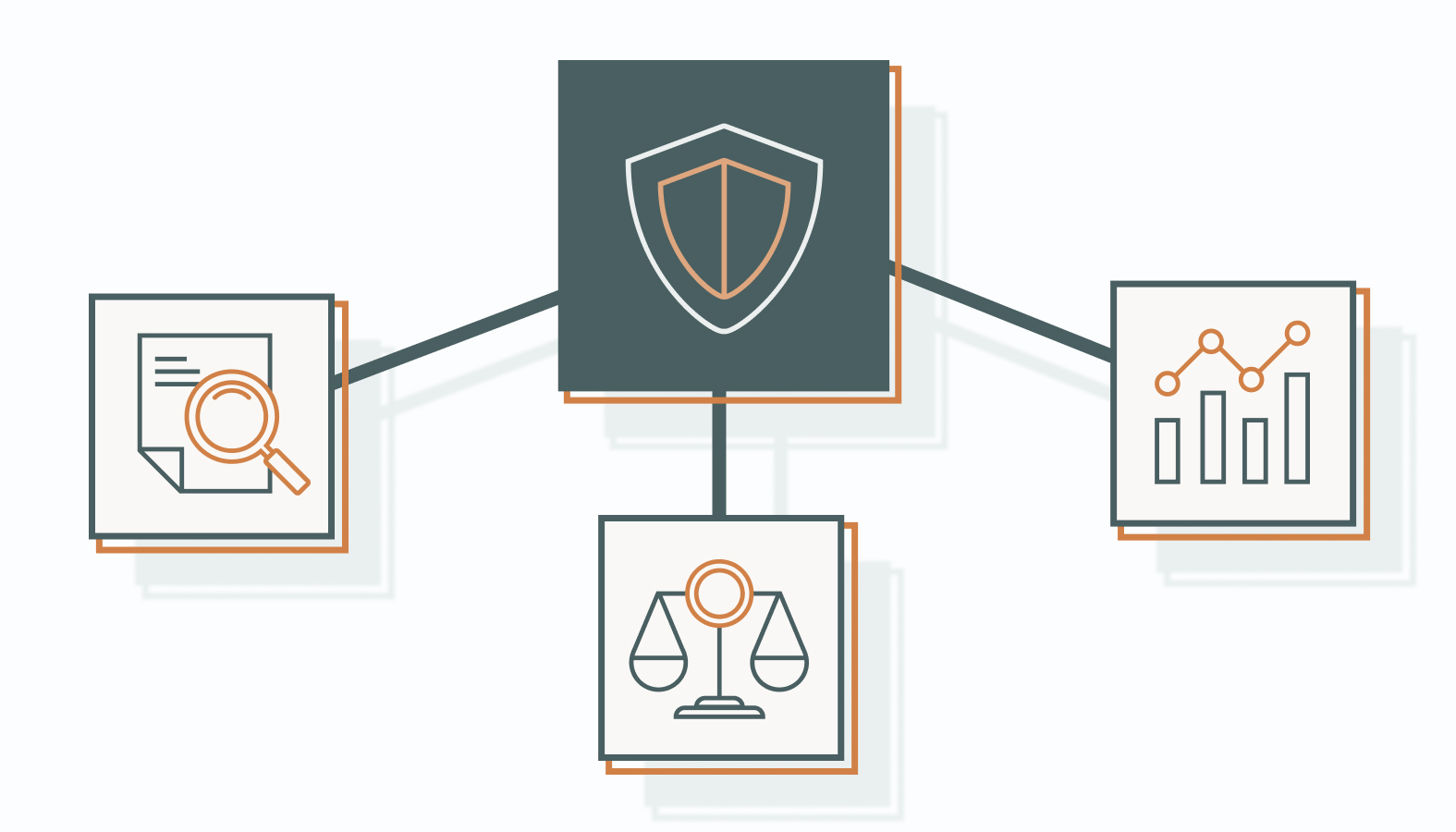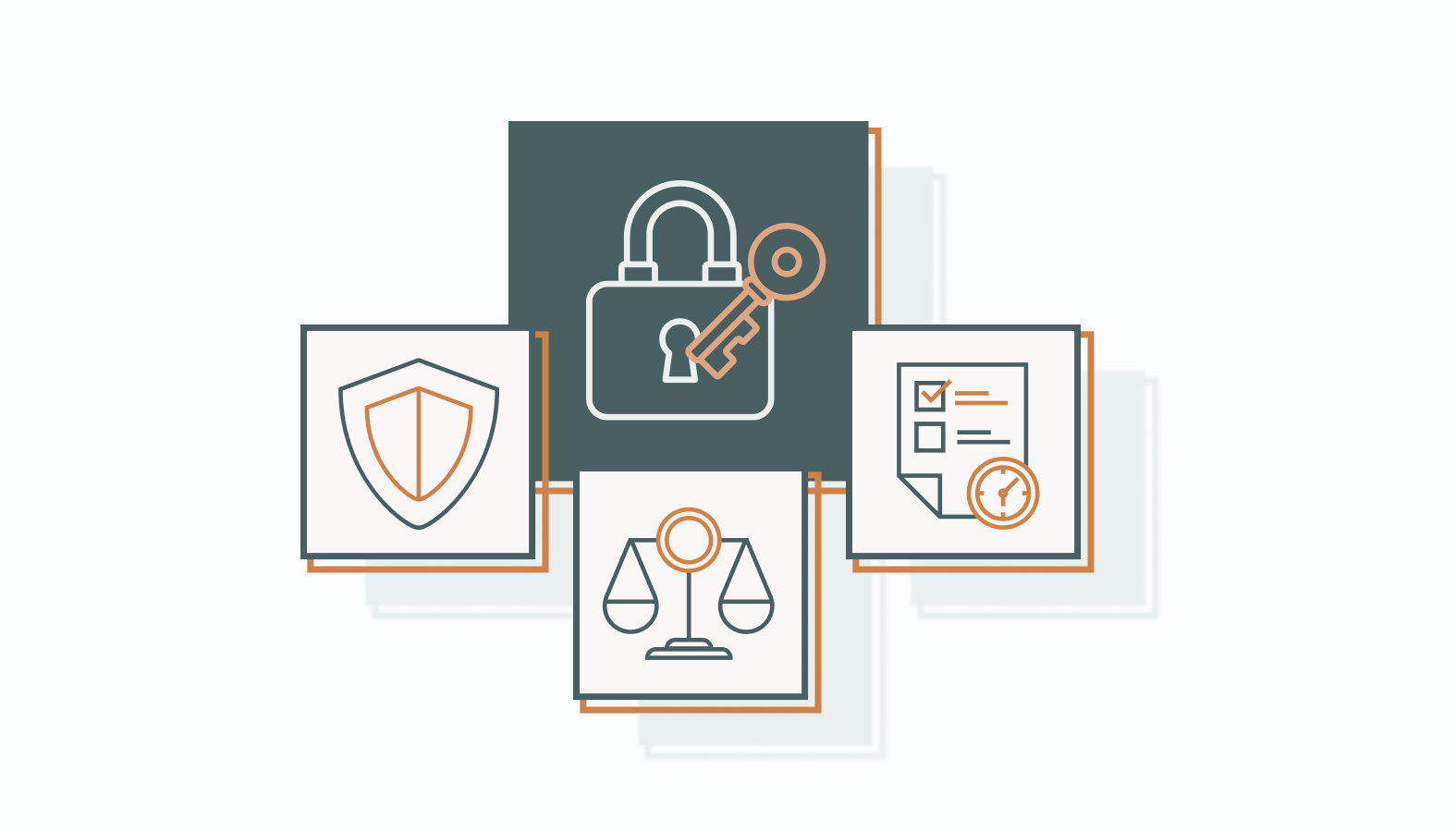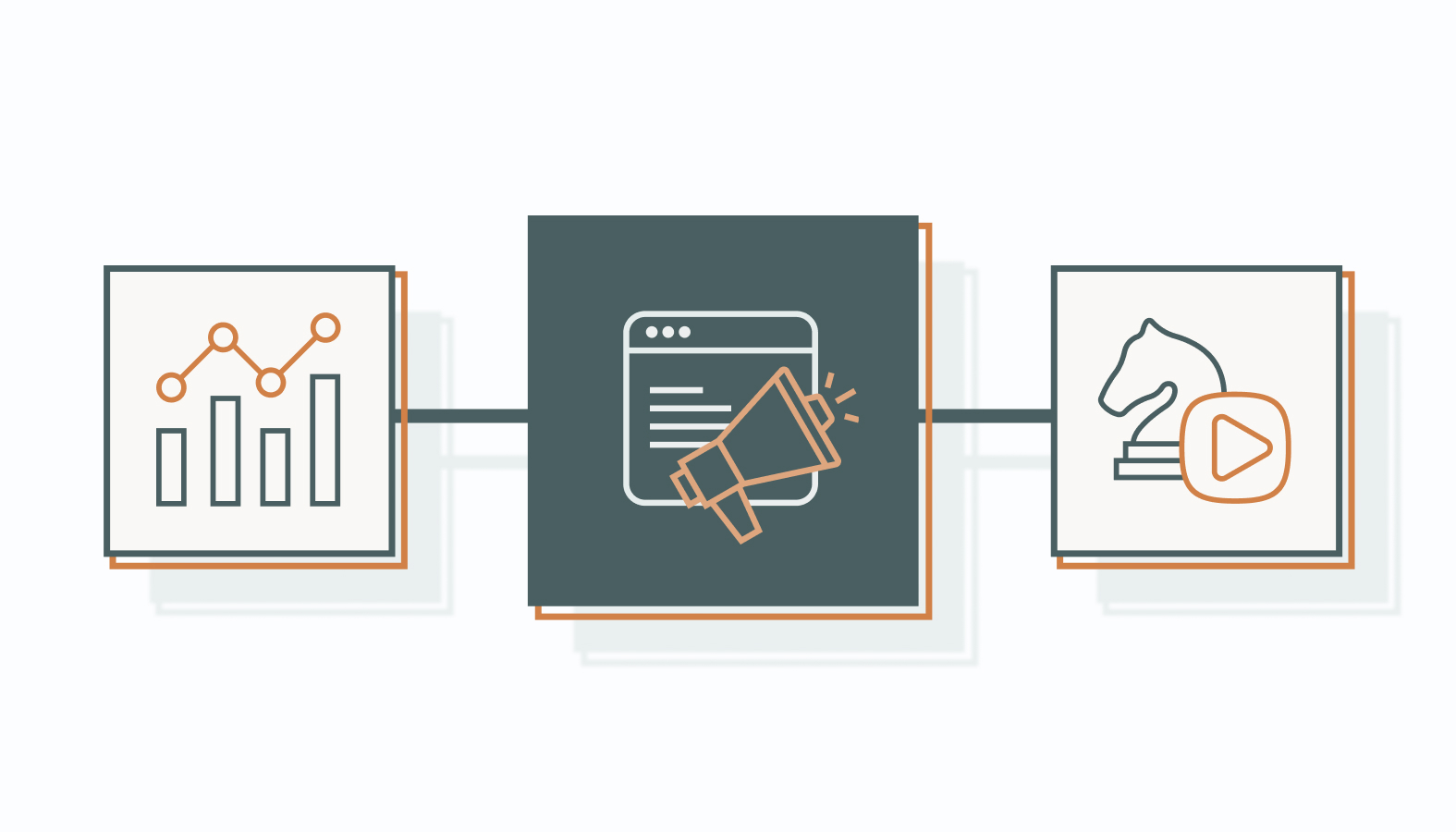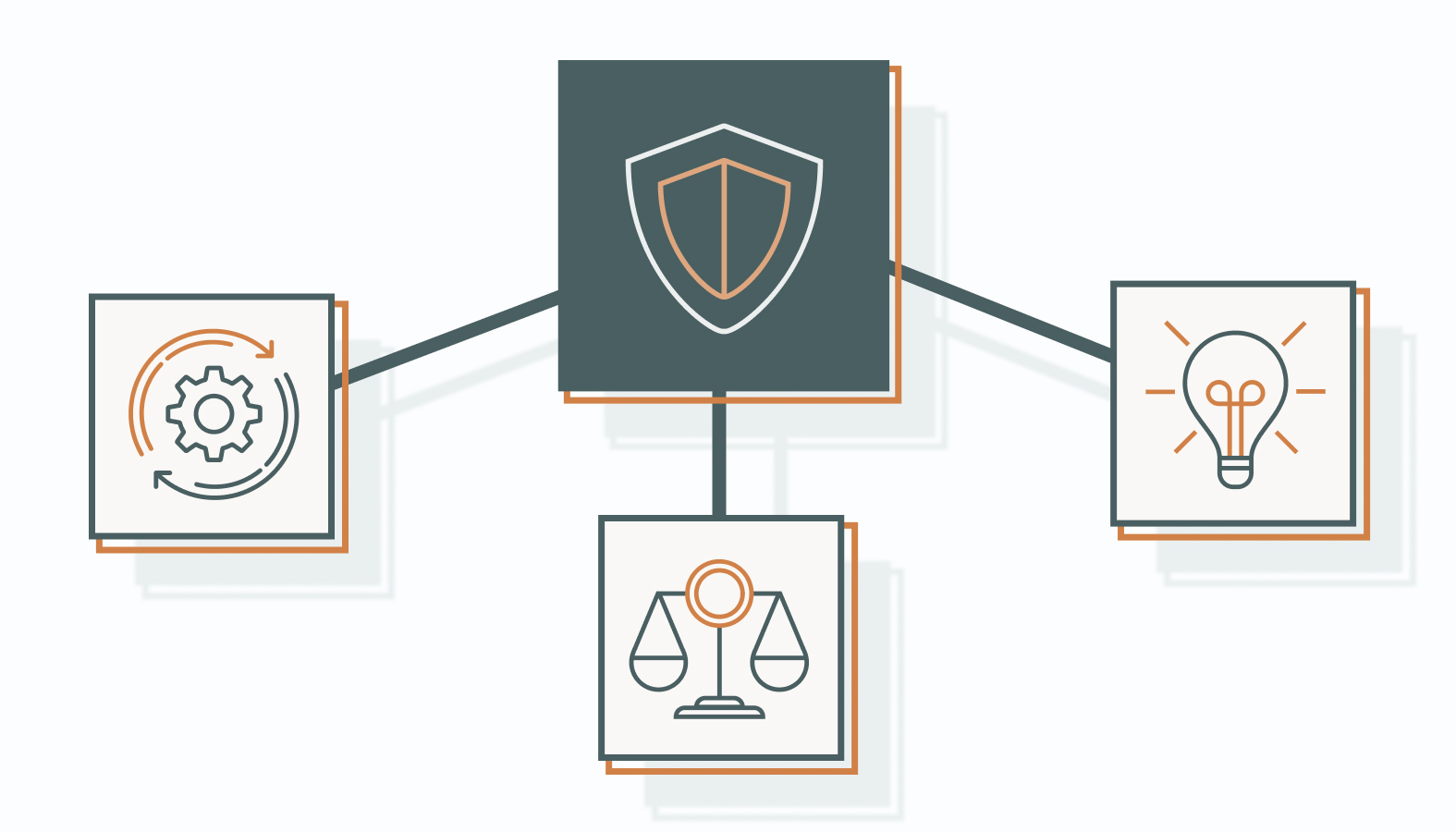Every click, form, and purchase tells a story… and consumers are paying attention. They’re not just handing over data anymore; they’re questioning who deserves it. That’s why a privacy-first strategy has become the standard for any brand that wants to stay trusted and relevant.
This strategy goes beyond ticking legal boxes or updating a policy once a year. It’s about building your business on respect for data, designing experiences that feel transparent, and proving that privacy and personalization can actually coexist.
Companies that embrace this privacy-first approach stand out because in a world where trust is currency, privacy is what earns it.
The real challenge? Moving from compliance to conviction. That takes more than new tools; it takes leadership, accountability, and a mindset shift across the entire organization.
Here’s how to make that shift and turn privacy into your next big advantage.
How to Implement a High-Impact Privacy-First Strategy
In the modern digital ecosystem, data is currency, and consumers are a lot more careful about who they invest it in. Integrating privacy into the DNA of your business is survival.
A strong privacy-first strategy does more than keep your legal team happy. It signals to customers that you respect their data as much as your own, creating a foundation of trust that competitors can’t easily replicate.
Beyond Compliance: Turn Privacy Into a Strategic Asset
Compliance may keep you out of trouble, but it won’t win hearts or market share. The real edge comes when you treat privacy as a driver of innovation, instead of a regulatory burden.
When you build products and processes with privacy as a design principle, you’re avoiding penalties and shaping perception.
Take Apple. Its App Tracking Transparency feature aligned with privacy laws and redefined expectations across the industry. Apple understood that protecting user data was a statement that earned them unwavering customer trust.
Build Loyalty: Make Trust Your Guiding Business Principle
Trust is built through clarity and consistency. Customers want to know what’s being collected, why it matters, and how it benefits them. That’s where transparency stops being a buzzword and starts becoming a brand differentiator.
DuckDuckGo gets this right. By refusing to track user activity, they’ve built a community that values honesty as much as security. It’s proof that when people feel respected, they stick around.
In a marketplace flooded with noise, trust is what keeps your signal strong, and privacy is what powers it.
3 Core Elements of a Robust Privacy-First Strategy
A well-built privacy-first strategy doesn’t just protect your company, it powers it. When privacy becomes part of your business architecture, not an afterthought, you gain more than compliance. You build confidence, credibility, and operational resilience.
Customers know their data is safe, and your brand earns the kind of trust that marketing budgets can’t buy.
Let’s break down the three pillars that separate privacy-first organizations from those just keeping up.
1) Conduct a Comprehensive Privacy Audit: Find the Gaps Before They Find You
Think of this as your data reality check. You can’t protect what you don’t fully understand, and too many organizations rely on outdated assumptions about where and how data moves.
A proper audit maps every touchpoint where information flows in, out, and through your systems because blind spots are what create risk.
Here’s how to approach it:
- Map your data flows: Identify where data comes from, where it’s stored, and who can access it.
- Evaluate compliance status: Benchmark your current privacy posture against frameworks like GDPR, CCPA, or PIPL (more on this later).
- Assess risk exposure: Use tools like OneTrust, BigID, or TrustArc to automate discovery and highlight weak spots.
- Act fast on vulnerabilities: Create clear remediation plans and assign accountability before minor issues become major ones.
A privacy audit isn’t a one-and-done task; it’s a continuous feedback loop that keeps your systems honest and your brand protected.
2) Strengthen Policy and Communication
Privacy policies shouldn’t read like legal hieroglyphics. The goal isn’t to confuse your audience, but to earn their confidence.
Keeping your policies updated is only half the job. The other half is communicating them in a way that feels human, clear, and trustworthy.
Best practices for a privacy-smart communication strategy:
- Speak plainly: Replace jargon with simple, human language. If a reader needs a lawyer to interpret your policy, you’ve lost them.
- Stay proactive: Share privacy updates through newsletters, product announcements, or even short explainers on social channels.
- Train your team: Everyone from marketing to product development should understand how your privacy standards apply to their work.
- Create an open channel: Encourage questions and feedback. A company that listens earns trust faster than one that hides behind legal clauses.
Strong communication demonstrates compliance and turns privacy into a shared value your audience connects with.
3) Practice Data Minimization: Less Data, More Trust
Here’s a truth most companies don’t want to admit: more data doesn’t always mean better insights. Collecting everything “just in case” is outdated thinking and a security risk waiting to happen.
A privacy-first strategy thrives on intentionality. Collect only what you need, store it only as long as necessary, and delete it once its purpose is served.
Smart ways to put this into action:
- Define clear data goals: Before collecting anything, ask, “Why do we need this?”
- Limit access: Apply the principle of least privilege. Only authorized personnel should handle sensitive data.
- Automate deletion cycles: Build retention schedules that clean up old data automatically.
- Audit continuously: Review collection practices regularly to eliminate redundancies and reduce risk exposure.
The bonus? Less data means fewer storage costs, smaller attack surfaces, and faster decision-making. It’s efficiency and security rolled into one.
Adapting to Global Privacy Regulations (GDPR, CCPA, PIPL)
The global privacy landscape isn’t slowing down – it’s accelerating. From stricter data transfer rules to expanding consumer rights, new frameworks are rewriting how organizations handle personal information.
Staying compliant is smart business; it’s a signal that your brand takes responsibility seriously.
The Global Privacy Landscape: What’s Shaping the Next Era
As we look ahead, several forces are reshaping privacy governance:
- Data sovereignty: Nations are tightening rules on where data can be stored and processed.
- Cross-border transfers: Businesses must ensure the secure movement of data across regions.
- Consumer control: People expect visibility and authority over their personal information.
Countries like the U.S., China, and members of the EU are pushing forward with new frameworks that demand agility from global organizations. The companies that adapt fastest will earn both compliance and consumer trust.
Regulations to Watch: GDPR, CCPA, and PIPL
If privacy regulations were an orchestra, these three would be the lead instruments:
- GDPR (Europe): The EU’s General Data Protection Regulation (GDPR) is still the global benchmark for user rights, consent, and data transparency.
- CCPA (California): A model for U.S. data privacy, the California Consumer Privacy Act (CCPA) is focused on consumer control and disclosure.
- PIPL (China): The Personal Information Protection Law (PIPL) emphasizes strict consent and localization requirements.
Together, they define what responsible data management looks like in 2025 and beyond. Organizations should treat them as blueprints for global best practices, not regional obligations.
Transforming Compliance into a Competitive Edge
Let’s face it. Nobody gets excited about compliance. But that’s only because most companies see it as a cost center, not a credibility builder. When done right, compliance can actually fuel growth, rather than slowing it down.
Take Microsoft. By making privacy part of its brand identity, it turned policy into marketing. Features like granular user permissions and transparent data reporting have earned them both trust and differentiation.
Or look at Cisco, where privacy isn’t tucked away in legal. It’s embedded in product design, sales training, and customer engagement. The result? Streamlined operations, reduced risk, and a brand that customers feel safe doing business with.
The takeaway: treating privacy as a business strategy transforms compliance from a defensive play into an offensive advantage. Because in the modern marketplace, the brands that win are the ones people believe in.
Effective Marketing in a Privacy-First Environment
Marketing used to be a data-free-for-all. Now, the rules have changed, and so have the expectations.
In a privacy-first world, consumers aren’t just clicking. They’re consciously choosing who earns their trust. That means your marketing must be clever and credible at the same time.
Privacy-first marketing is an upgrade. When you respect your customers’ boundaries, you gain permission, loyalty, and long-term credibility.
Leveraging First-Party and Zero-Party Data
Let’s make one thing clear: the death of third-party cookies isn’t the end of personalization; It’s the rebirth of relevance.
First-party data (what you collect directly through interactions) and zero-party data (what customers intentionally share with you) are the new gold standard for ethical personalization. They’re accurate, permission-based, and infinitely more sustainable than rented data.
How to make it work:
- Collect with context. Use value-based exchanges, such as exclusive content, loyalty rewards, or personalized recommendations in return for data.
- Design with intention. Every data point you collect should serve a clear customer or business purpose.
- Respect preferences. Give users control over how their data shapes their experience. Transparency earns trust faster than any ad ever will.
Example in action:
- Spotify and Netflix are masters of first-party data. Every recommendation feels intuitive because it’s built on genuine user behavior.
- Sephora excels with zero-party data. Its quizzes and profile tools empower customers to co-create their experiences, not just consume them.
The result is a level of personalization that feels helpful, not haunting.
The Future of Ads: Contextual Advertising and Content Marketing
Cookies are crumbling, but creativity isn’t. The smartest marketers are shifting from surveillance to context, from tracking users to understanding moments.
Contextual advertising delivers relevant messages based on what users are viewing (instead of who they are). It’s privacy-friendly, brand-safe, and surprisingly effective when combined with strong storytelling.
Meanwhile, content marketing is stepping into the spotlight. The brands winning today are those offering education, entertainment, or empowerment, instead of just a sales pitch.
Examples worth studying:
- Patagonia earns loyalty through transparency and storytelling, turning ethical values into engagement.
- HubSpot built an empire on content that teaches before it sells, positioning itself as a trusted partner, not a pushy vendor.
Pro tip: Pair contextual advertising with meaningful content experiences. You’ll attract audiences not because you followed them, but because you understood them.
Measuring Success: KPIs for Your Privacy-First Marketing
If you can’t measure it, you can’t improve it. Privacy-first marketing still needs hard data – it just needs smarter metrics.
Key Performance Indicators to Track
- Data Breach Reduction: Fewer incidents = stronger data handling.
- Customer Trust Index: Use surveys, retention rates, and sentiment tracking.
- Opt-In Growth: Measure the rate at which users voluntarily share data.
- Regulatory Compliance Rate: Track audit scores and policy adherence.
- Engagement Quality: Monitor time-on-page, interaction depth, and conversion intent instead of vanity clicks.
Pro tip: Align these KPIs with both marketing goals and governance objectives. Privacy performance is now part of brand performance.
Evaluating Risk and Strengthening Compliance
Building privacy into your marketing requires vigilance. You can’t just “set it and forget it.”
Best Practices for Sustainable Compliance
- Run regular privacy audits. Identify risks, confirm controls, and keep documentation ready for regulators and customers alike.
- Perform ongoing risk assessments. Review every new campaign, vendor, and data pipeline for compliance alignment.
- Adopt privacy management tools. Platforms like BigID and OneTrust can automate the grunt work while providing real-time risk intelligence.
- Educate continuously. Your team is the first line of defense. Train them like it.
Think of compliance as the armor that lets your marketing team move fast without breaking things.
Future-Proofing Your Privacy Strategy
The only constant in privacy is change. Laws evolve, threats adapt, and consumer expectations rise. The companies that stay ahead are the ones that treat adaptability as a strategy, not damage control.
Anticipate and Adapt to Regulatory Shifts
Privacy regulations move faster than most boardrooms. Stay proactive by:
- Subscribing to privacy and cybersecurity briefings.
- Maintaining direct relationships with industry associations or privacy councils.
- Establishing an internal task force that reviews and updates policies quarterly.
And when change happens, move like a startup. Update policies, retrain teams, and communicate early. Agility beats apology every time.
Implement Ethical Data Handling to Boost Brand Trust
Ethics is the new marketing edge. Transparent, fair, and purpose-driven data practices set brands apart when everyone’s fighting for trust.
How to operationalize it:
- Create a data governance charter that clearly defines ownership, permissions, and accountability.
- Offer plain-language privacy updates that consumers can actually understand.
- Keep the feedback loop open. When users ask questions, answer them honestly and fast.
Because trust isn’t a slogan – it’s a measurable, renewable asset.
Wisely Adopting New Technologies
AI, automation, and analytics can amplify privacy-first marketing, but only if used responsibly.
Before adopting any new tool or platform, evaluate:
- Alignment: Does it enhance or undermine your privacy commitments?
- Security: How does it protect stored and transmitted data?
- Scalability: Can it adapt to new compliance requirements?
- Integration: Does it work seamlessly with your existing privacy stack?
Invest in technology that strengthens your credibility, not just your capabilities.
Build Trust Like It’s Your Business (Because It Is)
Build Trust Like It’s Your Business
Privacy is no longer just a safety measure; it’s a statement of how your brand operates and what it stands for. A strong privacy-first foundation doesn’t just protect data; it amplifies credibility, sharpens your competitive edge, and turns trust into a renewable source of growth.
As digital competition intensifies, the brands that rise won’t be the loudest, they’ll be the ones consumers believe in. By weaving privacy into innovation, personalization, and customer experience, you turn responsible practice into lasting brand power.
The equation for the future is simple: respect drives trust, and trust drives growth. In an era powered by data, privacy is the engine that keeps your business moving forward.
Ready to Power Up Your Privacy Strategy?
Turn privacy into your competitive advantage.
Explore how a well-built privacy-first strategy can strengthen your brand, drive customer loyalty, and future-proof your business.
Schedule a candid conversation with one of our experts today and start transforming compliance into competitive strength.










